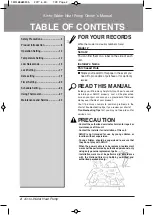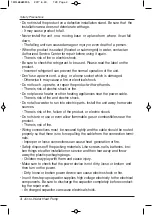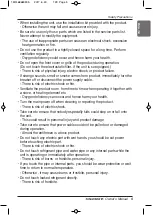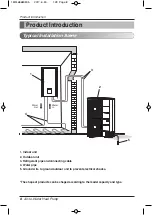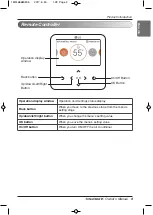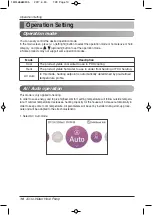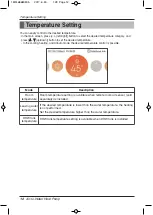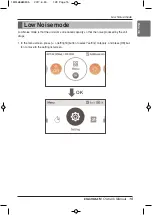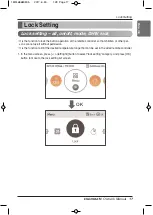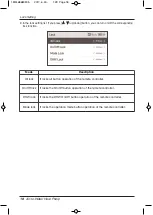
4
Air-to-Water Heat Pump
Safety Precautions
• Do not install the product on a defective installation stand. Be sure that the
installation area does not deteriorate with age.
- It may cause product to fall.
• Never install the unit on a moving base or a place from where it can fall
down.
- The falling unit can cause damage or injury or even death of a person.
• When the product is soaked (flooded or submerged) in water, contact an
Authorized Service Center for repair before using it again.
- There is risk of fire or electric shock.
• Be sure to check the refrigerant to be used. Please read the label on the
product.
- Incorrect refrigerant can prevent the normal operation of the unit.
• Don't use a power cord, a plug or a loose socket which is damaged.
- Otherwise it may cause a fire or electrical shock.
• Do not touch , operate, or repair the product with wet hands.
- There is risk of electric shock or fire.
• Do not place a heater or other heating appliances near the power cable.
- There is risk of fire and electric shock.
• Do not allow water to run into electric parts. Install the unit away from water
sources.
- There is risk of fire, failure of the product, or electric shock.
• Do not store or use or even allow flammable gas or combustibles near the
product.
- There is risk of fire.
• Wiring connections must be secured tightly and the cable should be routed
properly so that there is no force pulling the cable from the connection termi-
nals.
- Improper or loose connections can cause heat generation or fire.
• Safely dispose off the packing materials. Like screws, nails, batteries, bro-
ken things etc after installation or service and then tear away and throw
away the plastic packaging bags.
- Children may play with them and cause injury.
• Make sure to check that the power device is not dirty, loose or broken and
then turn on the power.
- Dirty, loose or broken power device can cause electric shock or fire.
• In unit the step-up capacitor supplies high voltage electricity to the electrical
components. Be sure to discharge the capacitor completely before conduct-
ing the repair work.
- An charged capacitor can cause electrical shock.
1,MFL68680905,영영 2017. 6. 30. 영영 1:29 Page 4


